|
When I first spotted Swipes the Porcelain crab in a shop she was not very much to look at. Pale and stressed, squeezed into the corner of the shop tank with not a rock or pipe to hide under. Now almost two and a half years later she's a picture of health and as colourful as can be. A perfect reef inhabitant.
0 Comments
Time for a long overdue FTS update. As you can see the coralline continues to encrust apace, every now and again I scrape it off the front and sides but I leave it to grow rampant on the back wall. The plates grow quite thick until a large snail crawls across and the added weight causes a chunk to detach and they both fall down to the sand. I'm sure some eagled-eyed reefers will have spotted the presence of hair algae in some of the previous close-up shots. If it weren't for the aforementioned coralline I expect the situation would be a lot worse. It began to grow when I lost some of the Acropora to red bugs. I cut out the branches but that still left dead encrusted bases which provided the perfect breeding ground for algae. I was not thrilled about the appearance of the green hair algae but it did allow me the opportunity to purchase a gorgeous Rainford's goby who loves to graze on the tufty stuff. I've noticed recently however, that it's been starting to spread elsewhere in the tank. For example when I brought the Balanophyllia up from the sump the rock on which it was attached rapidly grew a green furry cover as did the freshly exposed rockwork after I removed the Seriatopora. Part of the problem lies with the clean up crew as they simply do not venture on to the rocks to feed any more. The Trochus and Turbo snails only bother to rasp algae from the glass walls, I think they find it too difficult to navigate around the corals, why make an effort to search for algae on the rocks when an easy meal can be found on the glass? The only snails I have found so far that make any difference to the hair algae are Money or Annular cowries. I have four of these fascinating molluscs and they do seem to have an appetite for the shorter hair algae, a patch will occasionally be mown down. I don't want to completely eradicate the hair algae as Jessie (the Rainford's goby) needs some in his diet so I'm a bit stuck as to what to do right now. The nitrate and phosphate levels are a touch under 4mg/l and 0.04mg/l respectively at my last ICP analysis (2nd September) so not overly high. I did try introducing a few new herbivorous molluscs in the hope that they would have a taste for it, (two Astralium sp. followed by three Spiny Astrea snails) but none of these new species are interested in eating the hair algae either. Typical! It seems that film algae/diatoms are preferred all round. The Trochus snails seem to do well on it anyway, last month I woke up to an alarmingly cloudy tank but it was just the snails having a bit of reproductive fun. After the loss of the Pintail wrasse the tank looked empty of movement, I still had 5 fish but most of the time Rei the Yellow wrasse is the only one that's really visible. The Possum and pink-streak wrasse flit in and out of the rock work, the tiny Nudus goby lives in a burrow and the Rainford's goby markings are so subtle that it kind of blends in with its surroundings. So what to add? I have a rather long wish list of fish that I'd like to keep but as I ran through it most of them were not a good fit. Grows too big, not compatible with current occupants, may eat corals, may eat shrimp, difficult to feed etc... In the end I kept coming back to the same two choices, a Spotted Mandarin (I love these fish!) and/or a firefish. The main issues with these were could I keep a Mandarin well fed in the long term and did I have enough hiding spots for the firefish to feel secure? I decided to go all in for a Mandarin, I have kept a male/female pair of Spotted Mandarinfish before now but my previous tanks were a lot bigger, if I was going to make it work in this tank some extra preparation was going to be needed especially since I have other pod hunting fish already in residence. Firstly I set up a culture of Tigriopus sp. copepods in the kitchen, this soon became two cultures a back up in case either one crashed. Then, as I read around some more, I started to wonder if the Tigriopus pods would be sufficient. It seems that Tisbe sp. copepods are the recommended snack of choice for Mandarins. Well if that's the case then I needed a culture of those too. Unfortunately although these pods are readily available to buy in the USA they are absolutely not it the UK. I couldn't find a single current supplier of those pods in the UK or in Europe for that matter. So after considering long and hard I decided to throw caution to the wind and order from Algaebarn in the US. The order was placed on a Friday and the pods dispatched the following Monday. They were due to be delivered Wednesday but due to import paperwork 'stuff' they were held up in customs. Finally the package was cleared and they were delivered one day late on the Thursday (so 4 days in transit in all). To my very great relief the pods were alive and active. They had been packed well with an icepack and a cosy looking sleeping bag to protect them. Once I had both species of copepods on the go I started to search for the perfect fish. I have seen many Mandarins in the shops during my travels in various states of health and they rarely look fat. Over a period of about a month I visited four different shops, the first three didn't have S. picturatus in stock (plenty of S. spendidus and scooter bennies) but the last one had a single Spotted Mandarin specimen. Sadly it was in the worst possible condition ever sat alone in a tiny acrylic box with no rocks or sand, it was just skin and bones poor thing. That shop should really be ashamed of itself, it was my first visit to there and I will certainly never be going back. Feeling disheartened I turned to online stores and discovered one supplier had Spotted Mandarins in stock AND had some Helfrich's firefish in too. The filefish were on offer, I think these fish are gorgeous and I couldn't resist. An order for one Spotted Mandarin, Synchiropus picturatus, one Helfrich's firefish, Nemateleotris helfrichi (and a couple of snails for good measure) was placed with Masterfisch.
The fish and snails arrived on time and looked great, they had been packed well. Phew! The Mandarin was a good weight, a male I think, he still needed a bit of fattening up but was not over thin either. After careful acclimation I nervously introduced the new stock with the lights out. My number one worry at this stage was how the Yellow wrasse would react, by switching off the lights it makes him vanish into the sand for a while hopefully giving the new guys a bit of breathing space to find their bearings. The Mandarin simply sank to the sand and, surprisingly, the firefish stayed out swimming around the front of the tank. For the entire time the lights were off the Mandarin did not move once. Once the lights were switched back on again he sprung to life and began exploring his new home. When Rei the Yellow wrasse emerged from the sand, to my very great relief, he totally ignored both new fish. I worried that the firefish would be scared and take to the rocks but it did not. So far so good! For the next few days the Mandarin scoured the tank for copepods and it's easy to see how a small tank can be depleted of food in a very short time. On day 3 to my delight he began eating frozen food, yay! The bigger worry at this point was the firefish he would take in food and spit it out again, however he absolutely devoured the live Tigger pods so I began adding them every day more for him than the Mandarin. It soon became clear that my pod production was never going to cope with being harvested so frequently. I had read how successful outdoor cultures of copepods can be with very little effort so I went about setting up two outside (now there are 3!). The other fishy occupants were loving the live copepod feeds too most particularly the Possum and Pink-streaked wrasse. so much so I wish I'd started feeding them before. It's been 6 weeks now since the new fish were introduced and both have settled in a treat. The Mandarin , called Kandinsky, has put on weight and now eats practically everything you put in front of him. Gamma mysis, PE mysis, lobster eggs, brine shrimp, calanus, he's not so keen on fish eggs or pellet but he has 'tested' them out. With perseverance he may come to relish those too. I did start out with a feeding station that I built out of acrylic. It had holes either end for entry/exit with a feeding tube in the top for ease of access but to be honest it wasn't terribly successful. Kandinsky loved it but so did the hermit crabs and Nassarius snails. I would often find a member of the CUC upside-down inside the feeder and they didn't seem to be able to right themselves on their own so I gave up. I feed him direct with a pipette and leave the Nanostream pumps off whilst he takes in his fill. I did also hatch some baby brine on one occasion when the pop cultures were low but it didn't elicit such an enthusistic response so I didn't culture any more. I may try again in the future if needed. Spike, the Helfrich's firefish adores the live copepods and lobster eggs, he also eats mysis, brine shrimp etc. Interestingly he did eat small pellets for a while when he wasn't so keen on the frozen food but seems to have gone off them now. For the first 4 weeks I added live pods almost every day. Tigriopus during the daytime (6 days/week) and Tisbe pods at night (1 addition/week). I could not sustain this level of feeding beyond that (I supplemented with bags of pods from the LFS a few times as it was) and have reduced it to 3 or 4 doses of Tigger pods and one of Tisbe now. The Tisbe pod culture is doing well but harvesting is somewhat challenging, lol. They are so small, I know there are plenty jigging about in the culture tank but after harvesting it looks like I've caught nothing in the net. I've been pouring the 'dust', down a tube directly onto the sand to give them the best chance of survival (before the Mandarin finds them, lol). I do worry that by adding them at night when the sun corals are fully extended a lot might be captured and consumed whilst the Mandarin is snoozing. Talking of which I never realised it before but Kandinsky sleeps right out on the sand at night. He flicks a few grains over his body and just lies there right out in the open. Do all dragonettes sleep like this I wonder? It's been almost 8 weeks since introduction, fingers crossed that Kandinsky and Spike continue to do well. Coral warfare/shading is a becoming more and more of an issue as you would expect for any reef tank approaching 3 years of age. Well perhaps not if the tank had been sensibly/lightly stocked but I guess this hasn't happened. Common sense seems to fly out of the window where myself and reef tanks are concerned. Most of what I'm going to post is kind of good really. Generally the corals are growing well but there are some that are losing the battle for survival. The Stylophora needs regular trimming to prevent it from growing up to and touching the left hand glass wall. Its base continues to expand and kills off areas of contact with two neighbouring Montipora as it goes. It has also (along with the Pinnigorgia gorgonian) almost completely shaded out the Beach Bum Montipora. The Beach bum is fading away and there is nothing I can do about it, it's pretty much impossible to relocate. I try not to dwell on this fact too much, it's too painful. Big mistake. Big. HUGE! I removed most of the green plating Montipora a while ago but it's making a comeback and shading the corals below again. I should never have introduced a frag of this in the first place, I just knew it would end up causing issues in a small tank but it was free and I just couldn't throw it away. On the plus side I must admit it is a lovely vibrant green colour. The encrusting 'Superman' Montipora is possibly worse than the green plating Monti, I am definitely in need of some marine Kryptonite for this particular coral. At one point it grew up along one side of the clam till the Crocea decided enough was enough and forced its shell open wide enough to snap a good chunk of the the Montipora right off. The Superman Monti also kills any Seriatopora hysterix it touches and has encrusted over nearby Acropora like they were nothing but bare rock. Interestingly it has actually run out of rock space to the rear and has started growing out in a thick plate like formation instead. I grudgingly accepted the loss of the purple tipped Acro frags to the Superman as they were not thriving anyway (due to the presence of red bugs) but it was harder to take the potential loss of the Acropora gomezi. Despite the parasitic bugs, the A. gomezi still showed nice colouration, not what it should look like under normal conditions but still nice. For months I gritted my teeth and watched this Acro be overgrown, but right at the last minute I decided to frag off the remaining two branch tips. I fixed both of them to the same frag tile and plonked it on the sand. A quick survey with the magnifying glass showed me that the tiny A. gomezi frags are still providing a home/food to the red bugs. I could remove and dip them (repeatedly if needed) but if the bugs are present elsewhere in the system then they will just become reinfested again. The frags have encrusted on to the tile but that's about all they've done at this point. One of the branch tips had a close encounter with the Scolymia thanks to a hermit crab, and got stripped. It's almost recovered bar for a tiny bit of algae covered skeleton at the very end. You can see one red bug highlighted but the arrow in the photo below. The only other Acropora species remaining in the tank is A. hyacinthus (aka Red Planet), I have yet to discover any red bugs on it but that doesn't mean there aren't any lurking out of sight. Interestingly this Acro has been looking better recently colourwise, it's actually starting to look red once more, well pink at the very least. The Scolymia continues to look good. It needs to be moved in the not too distant future as the Favia behind is creeping ever closer. I can't afford for those two to meet! Knowing my luck the (much) more expensive coral would be the loser if they clashed. The Favia has completely overrun the Cyphastrea that used to grow to the right of it and continues to bubble up towards the Acanthastrea to the left. There's been no full on attack as of yet. The Acanthastrea are surviving but not really thriving. I know that they prefer lower lighting conditions but the plating Montipora above is shading them too much at present. I have been trying to feed them to try and make up for it but 9 times out of 10 Rei the Yellow wrasse steals the food. The Oxypora keeps expanding ever so slowly, it is also somewhat lacking in light these days. The Utter Chaos zoanthids are a complete nightmare. They grow so fast and don't seem to be bothered by anything (at least nothing they have encountered in the tank so far). SPS corals are fair game, they just reach up shade out an area of coral until the flesh recedes and then they colonise the dead skeleton. I'm sure that this is a familiar story to many other reef keepers. Having never kept zoas before this is a new one on me. They have grown up the side of the clam and were beginning to reach over and shade the mantle before I decided to scrape them off. A temporary fix as they are encrusting again. To be fair it's just the Utter Chaos zoanthids that are causing a headache, the rest are much slower growing (aside from growing out onto the sand which is making it hard for Lurch the conch to navigate round the tank). The Heliofungia has grown to a lovely size but is really squashed up in the front left hand corner of the tank. It remains attached to the small rock and so cannot move around. This is possibly a good thing as I'm sure there would be carnage if it could scoot along the sand and relocate itself. It expanded so much that it was stinging the orange Dendrophyllia to the right of it. The Lobophyllia has been doing OK, it's really slow growing but since it's tucked away at the side of the tank with not great lighting then that's not exactly surprising. It started off with one head and now almost has three. Unfortunately one night it suddenly launched an all out attack on the Black sun coral. Before now it had been almost completely overgrown by the Utter Chao zoanthids and not retaliated but clearly the threat posed by the Black sun was a different matter. It stripped three branches of the sun overnight. Since the orange Dendrophyllia and black sun both needed moving, plus I (still) had the Balanophyllia sitting in the sump I decided space needed to be made for them elsewhere. In the end I pulled out 100+ Utter Chaos zoas, clipped a few branches of A. hyacinthus and removed all of Seriatpora hystrix. The Seri broke into pieces during removal and I decided to keep just a single piece and reposition it a little higher up. This left a space big enough to just about squeeze in the sun corals, now I have quite a nice little cluster of NPS corals on the right hand side of the tank. After spending over a year and a half in the sump the Balanophyllia is finally back in the DT once more and it's looking good, I don't know why I struggled with it so much. I wonder if perhaps it had some sort of infection that caused the flesh to recede before. It's good to see it back to full health (fingers crossed). I'm also thrilled that the accompanying hitchhiker bivalve is still alive too, I have no idea what that is eating but it must be filtering out enough as it has grown larger since introduction. The yellow Dendrophyllia remains in place next to the Heliofungia, it has encrusted onto the rock work so I'm not going to mess with it. Eventually I expect it too will be stung but that's a problem for the future. In just over a year this Dendro has increased from 3 to 15 separate heads with another forming. Such a lovely looking coral. The Pinnigorgia gorgonian goes from strength to strength, it grows so fast and always fully extends its polyps. I have cut off a number of branches of it already and need to trim it some more. The Muricea and Plexaurella gorgonians are much slower growing tucked away at the back of the tank. That's it for now, I will post an updated full tank shot in a few days' time.
|
AuthorHi, my name is Lisa and I live in Derby, UK. I am a self-confessed reefaholic! Archives
July 2022
Categories
All
|
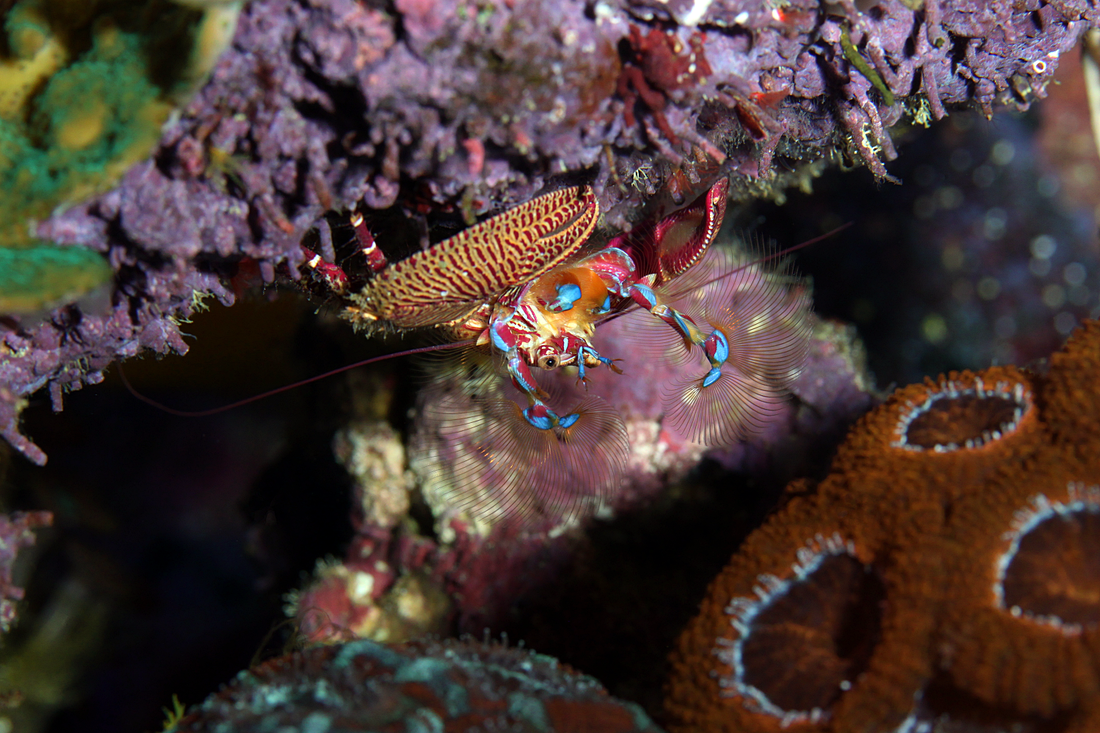
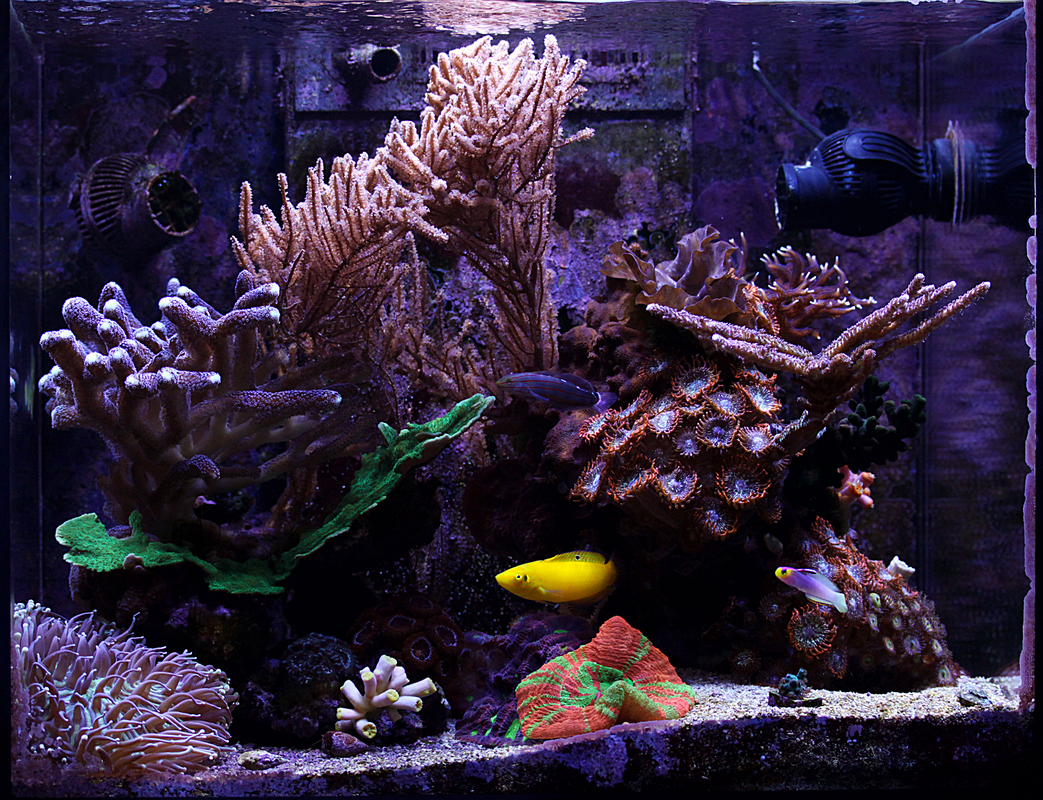
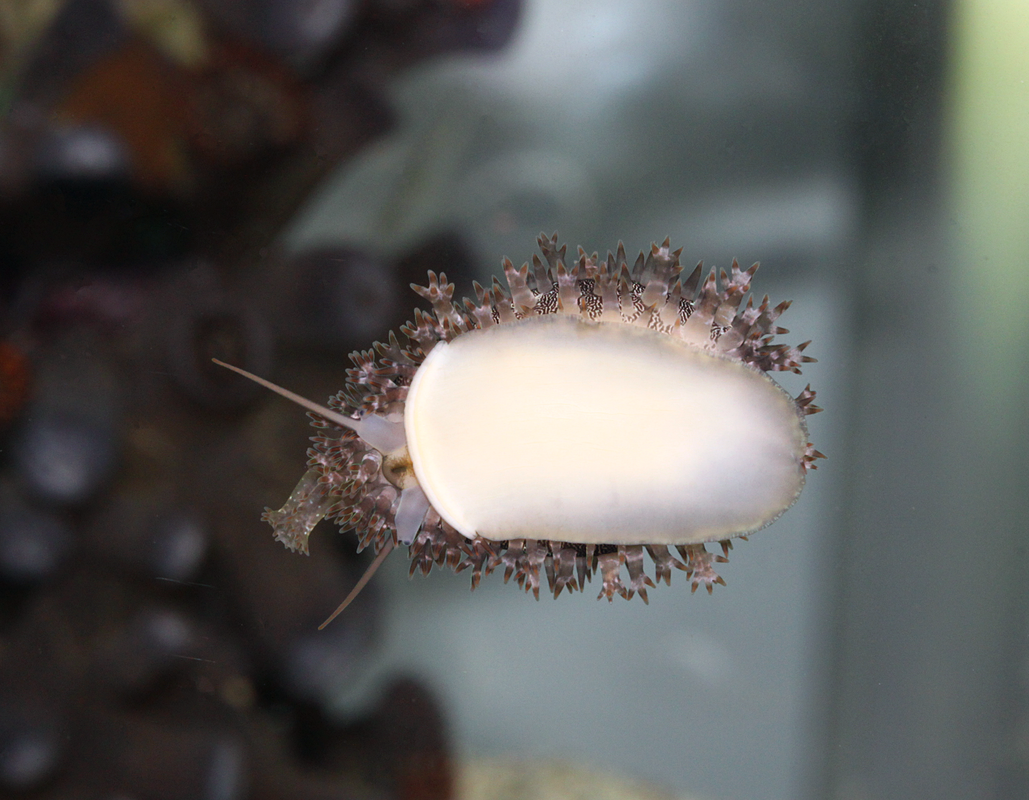
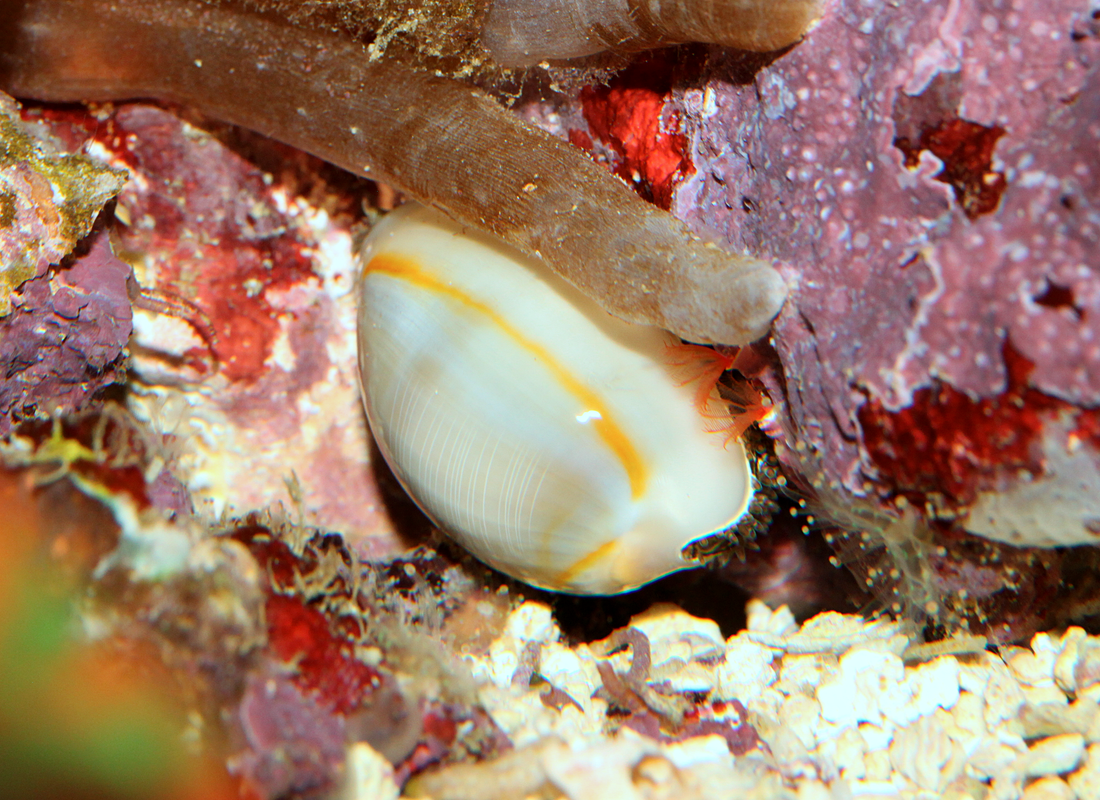
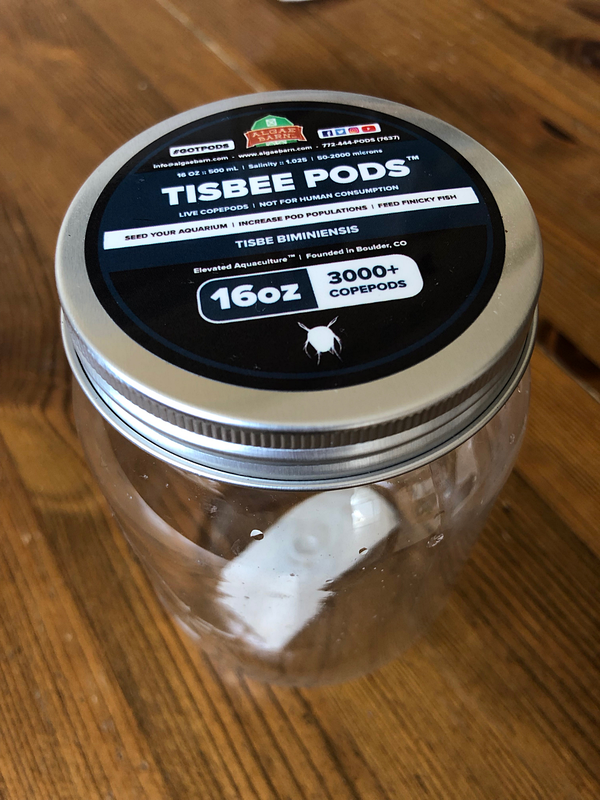
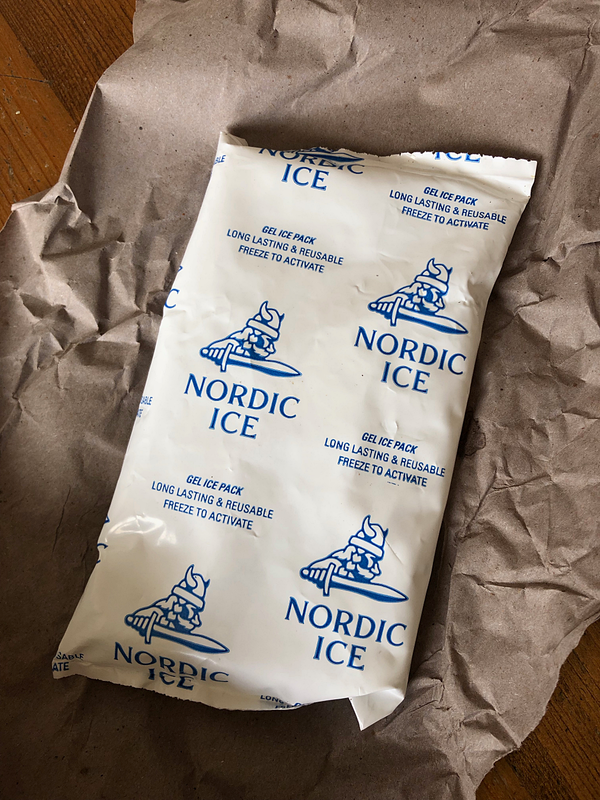
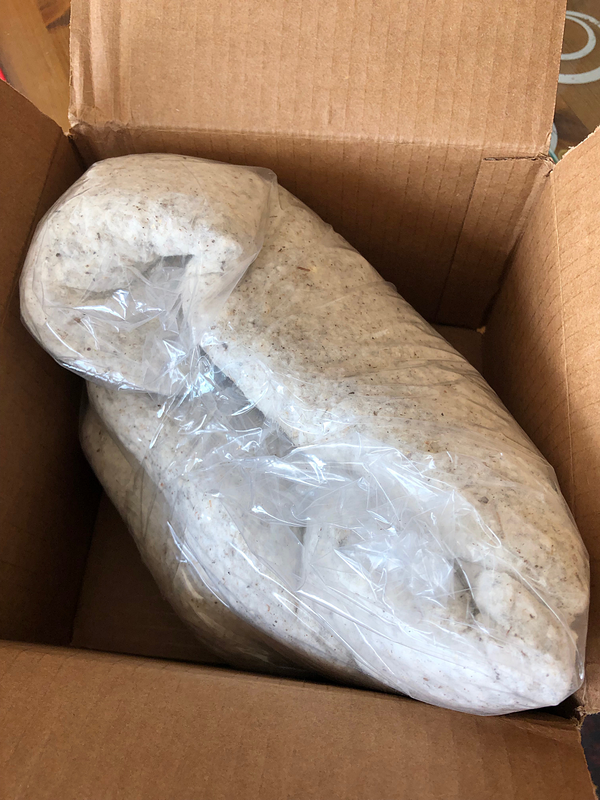
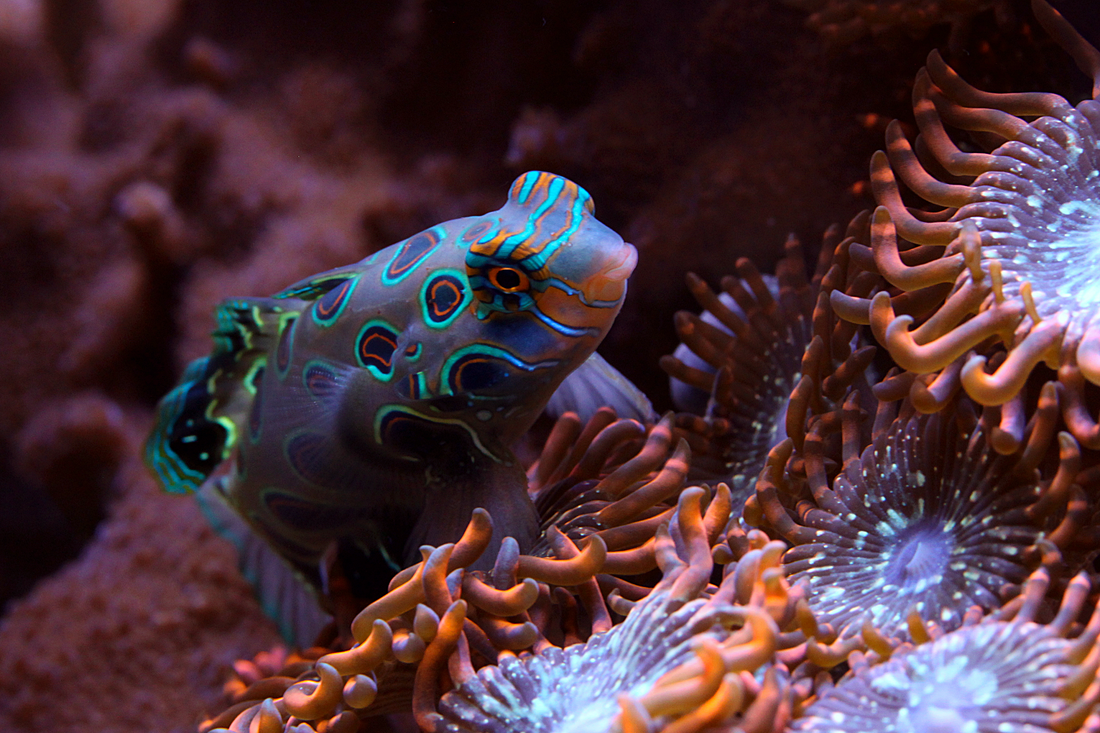
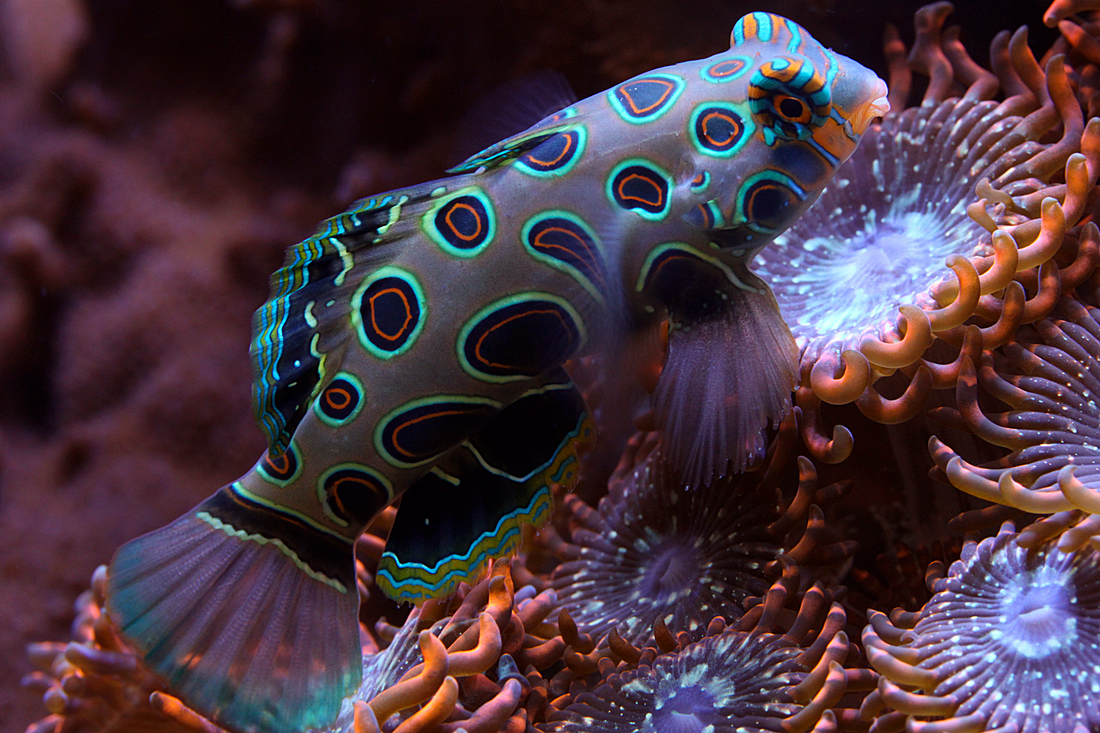
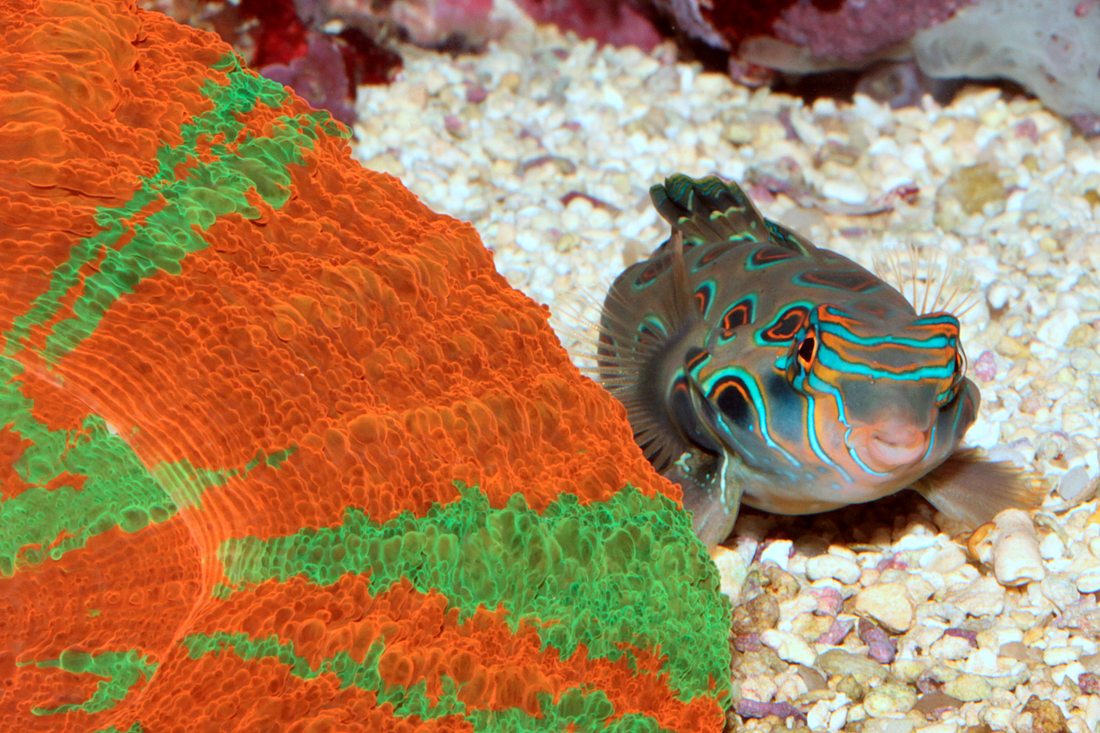
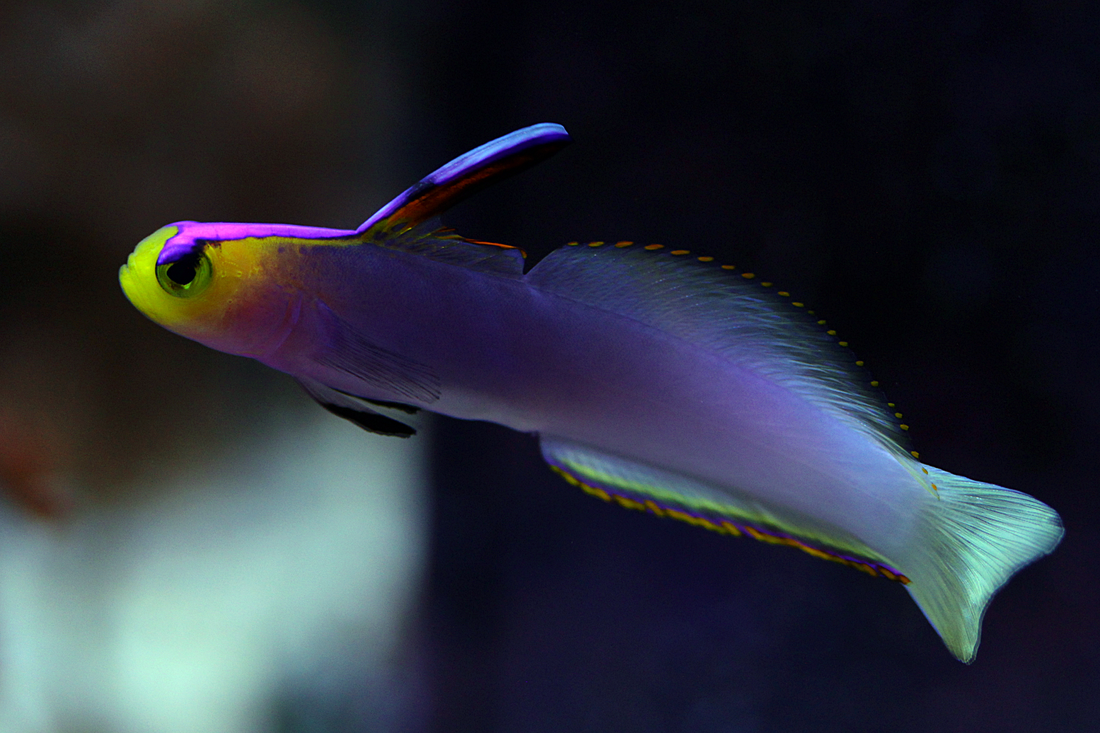
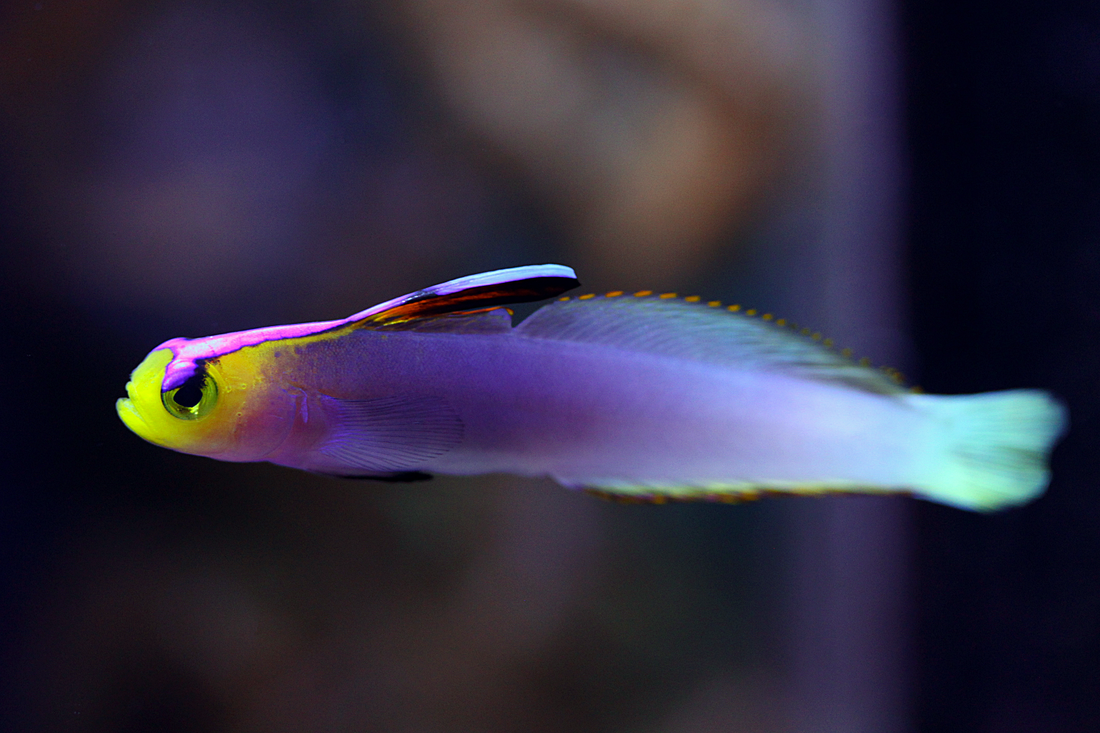
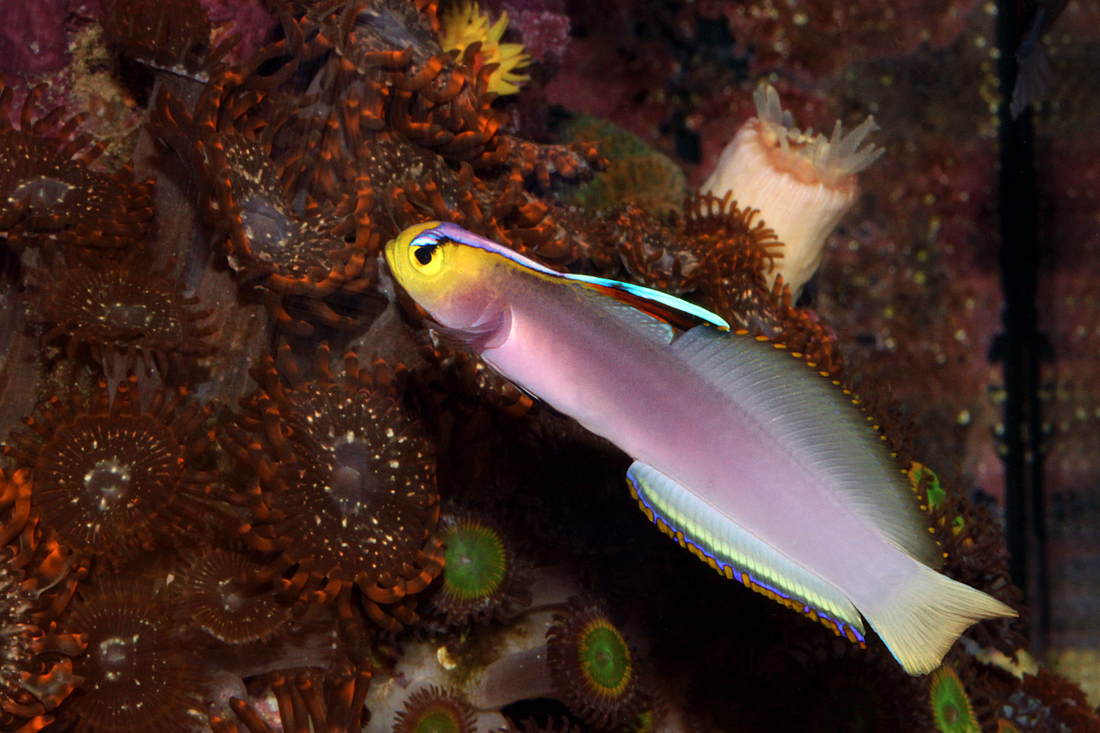
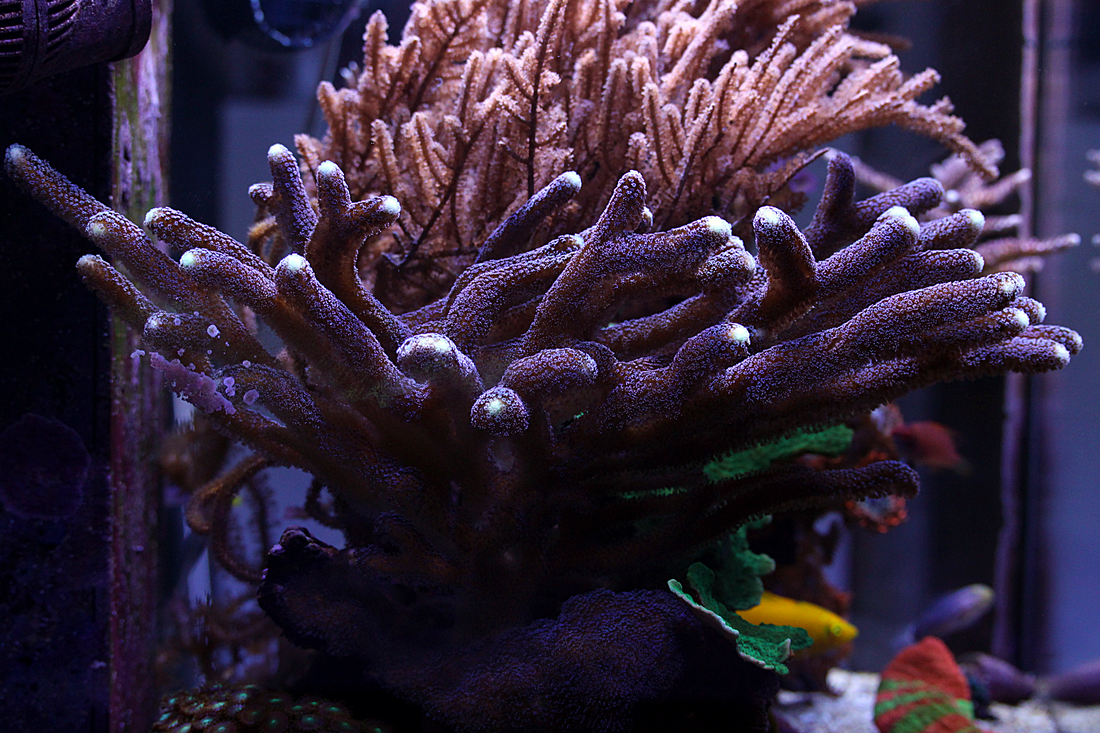
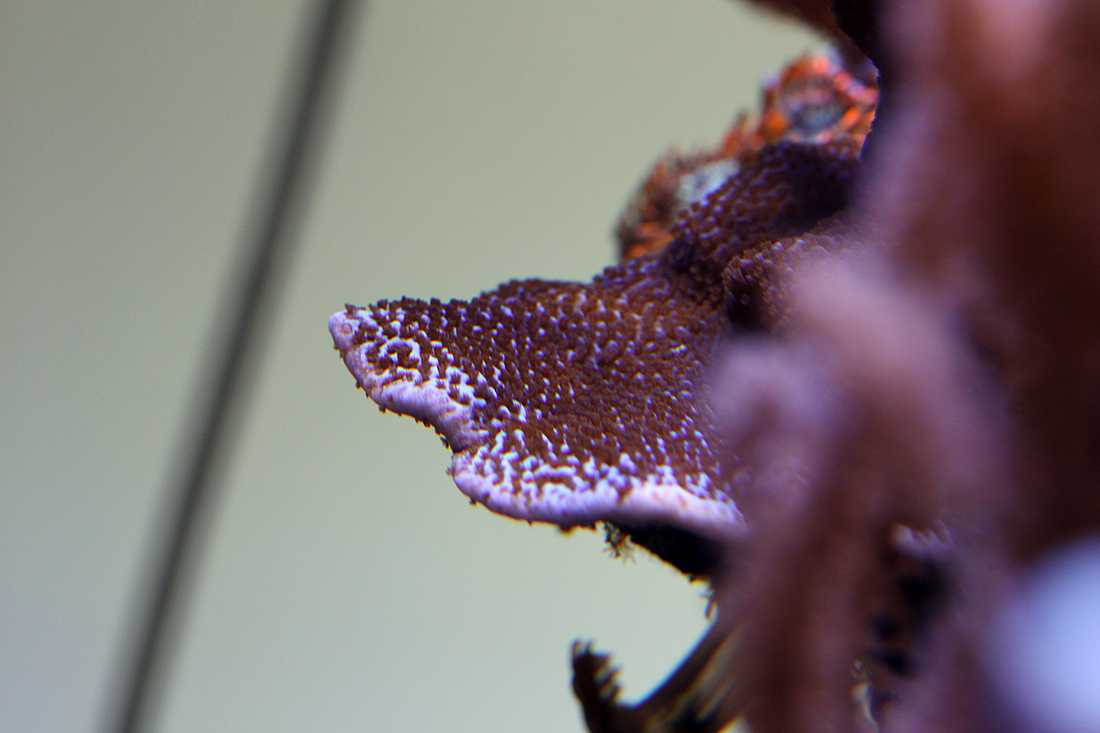
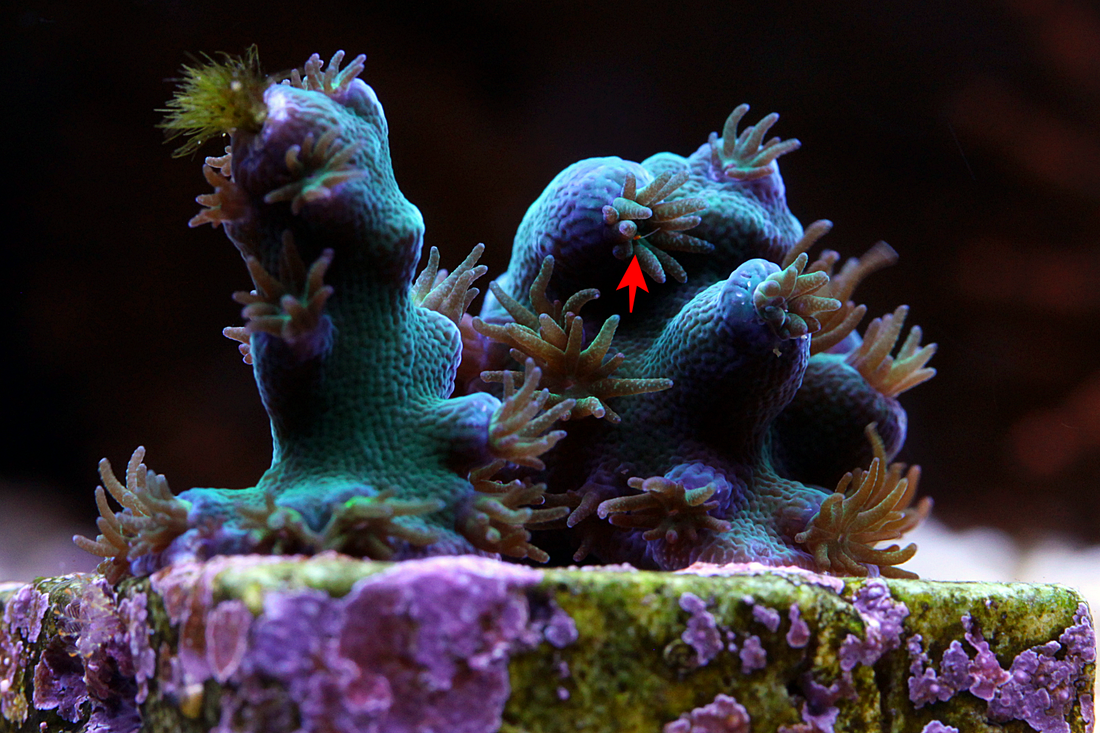
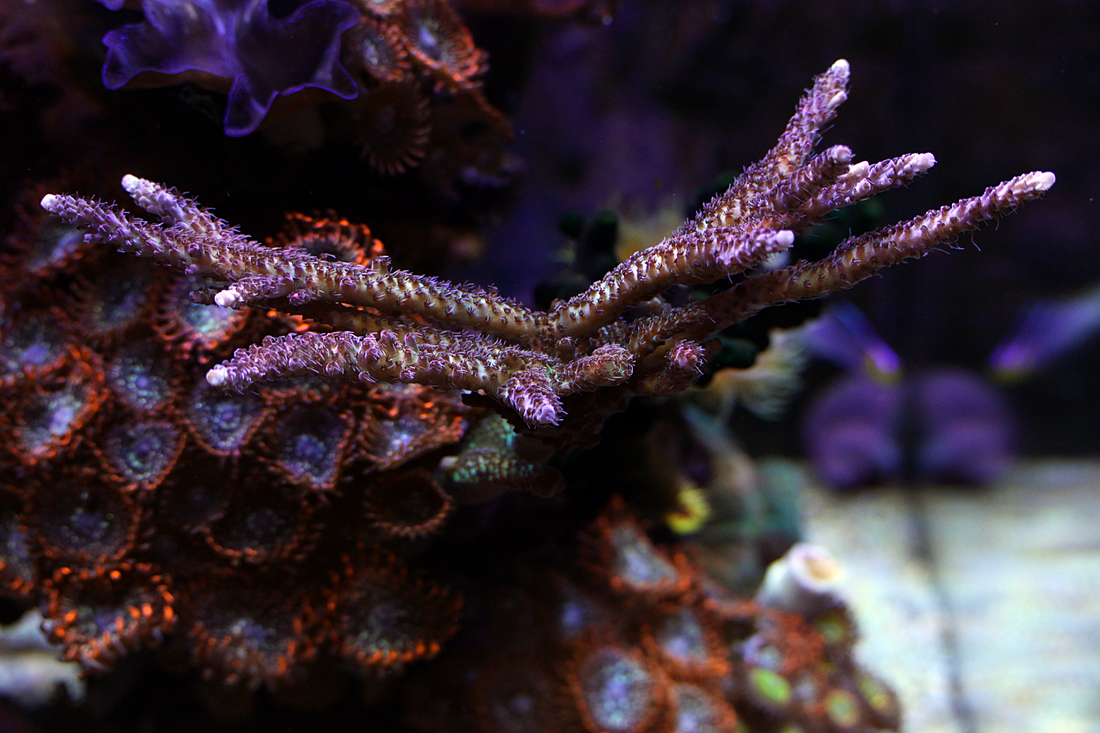
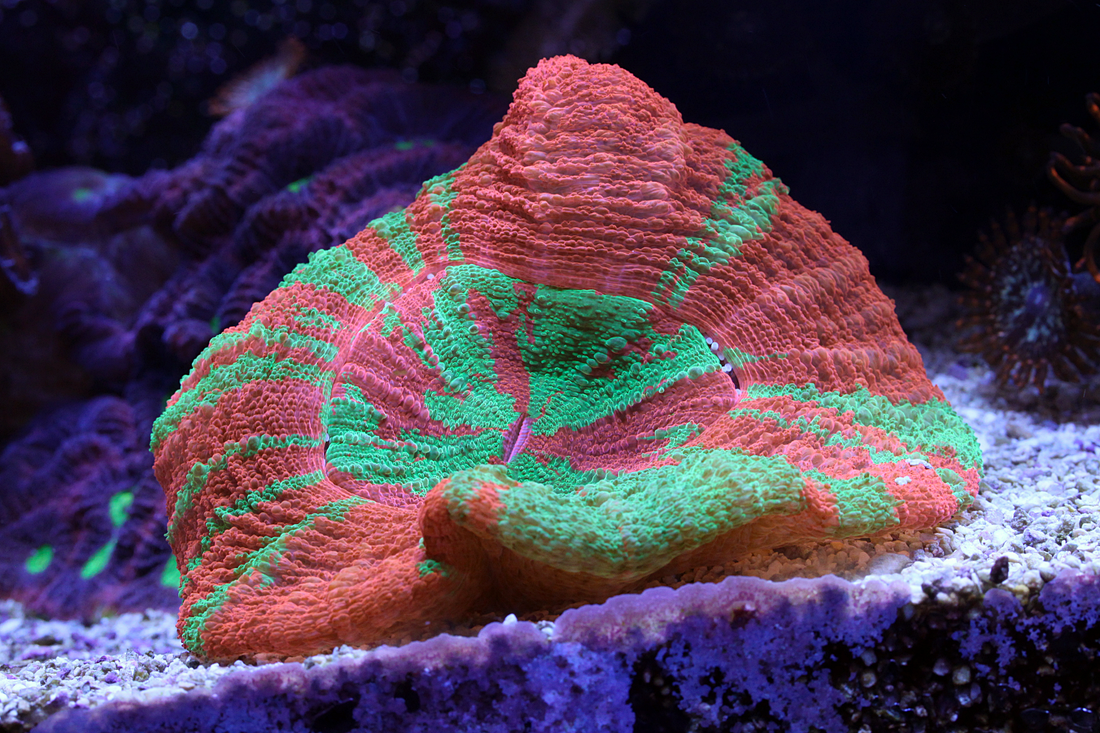
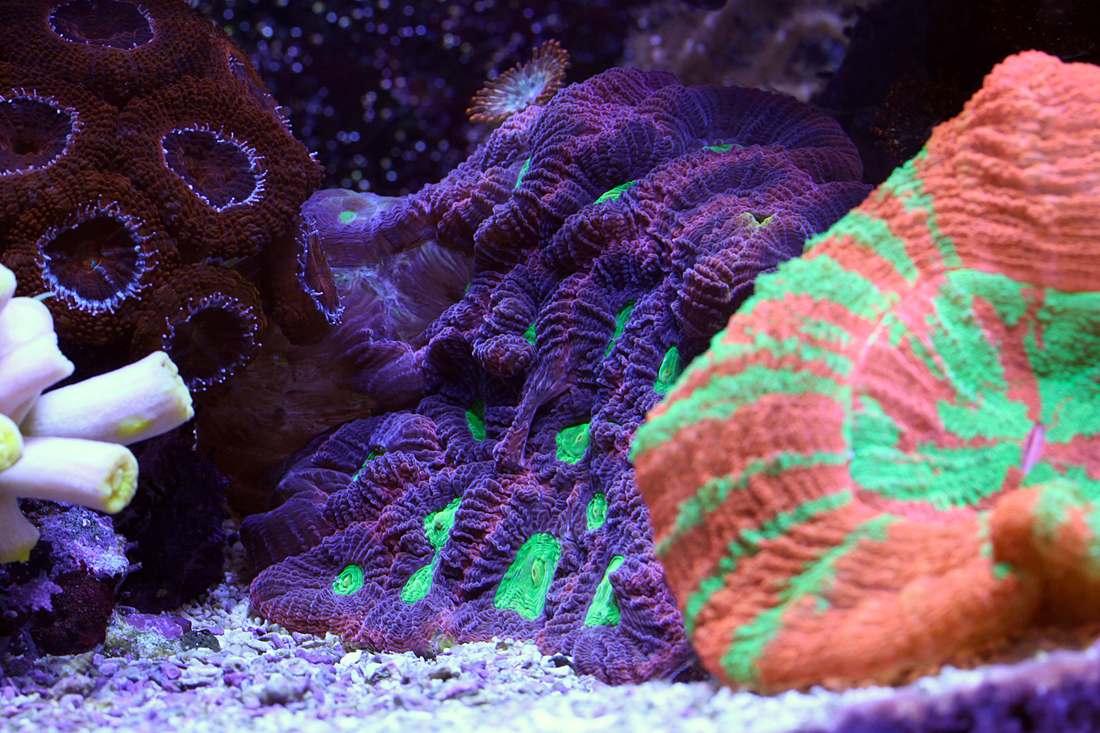
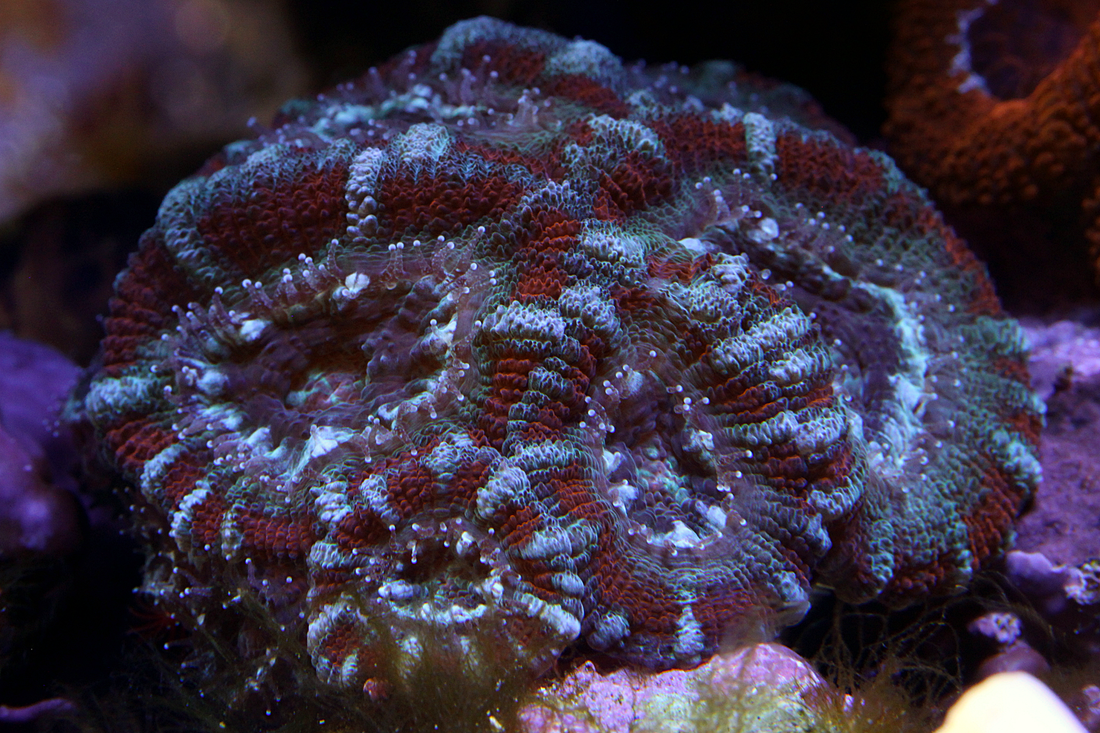
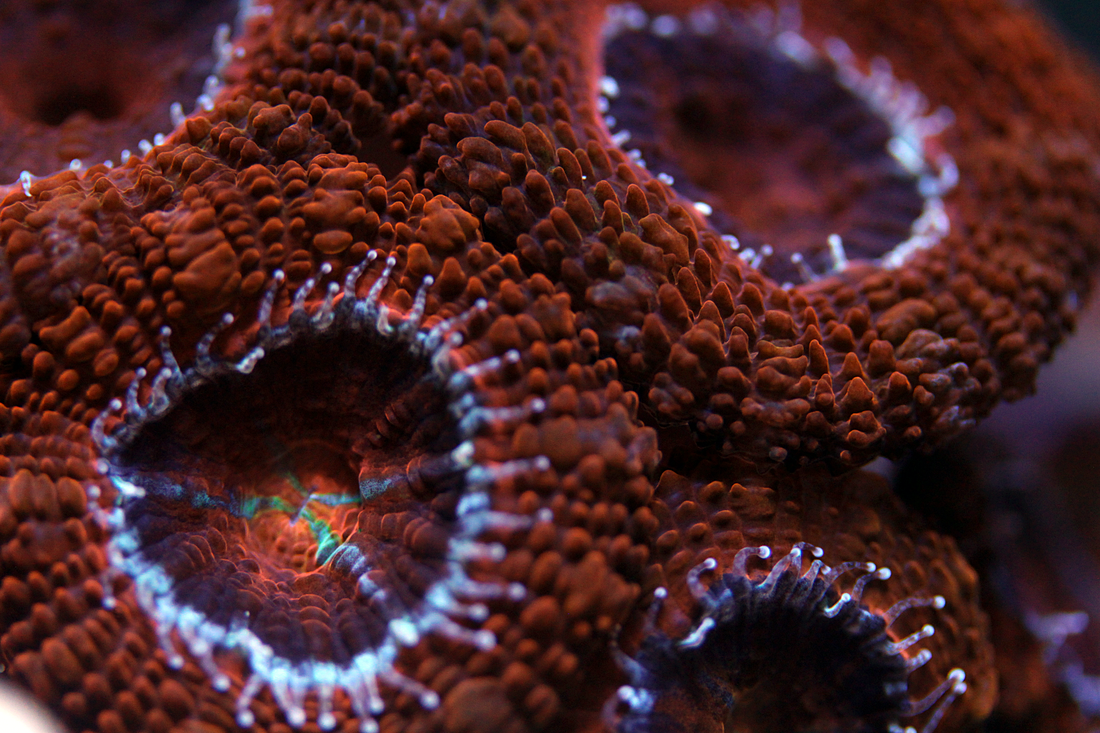
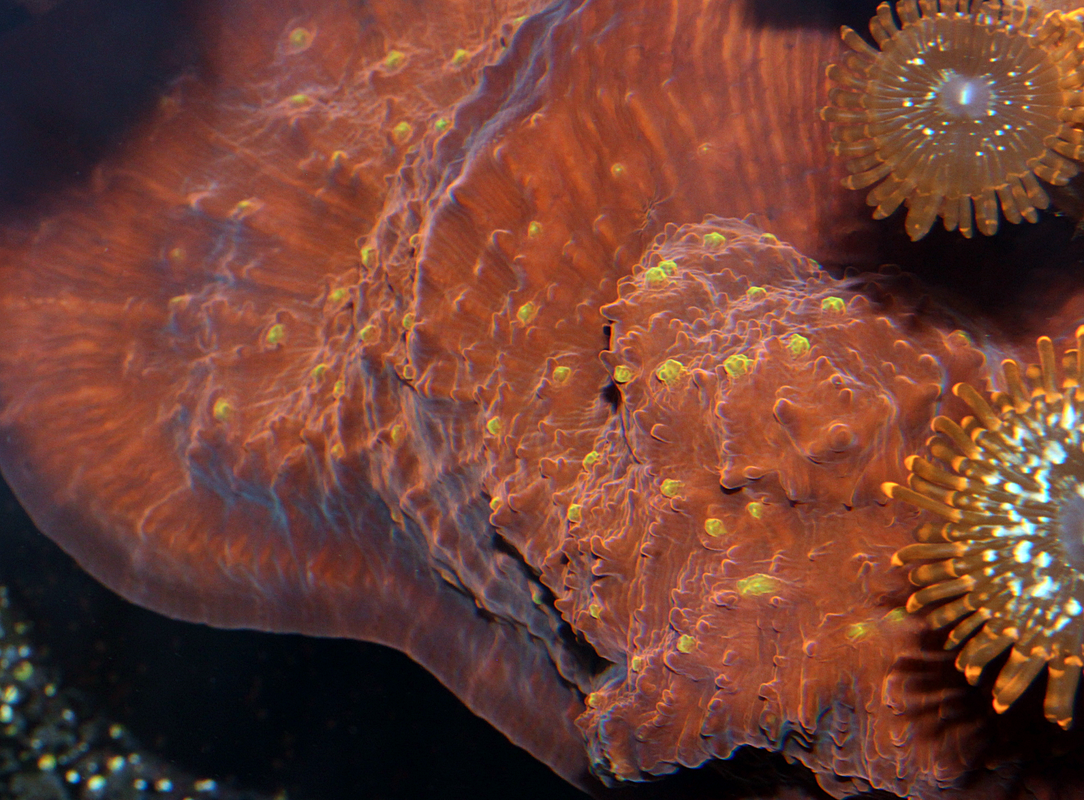
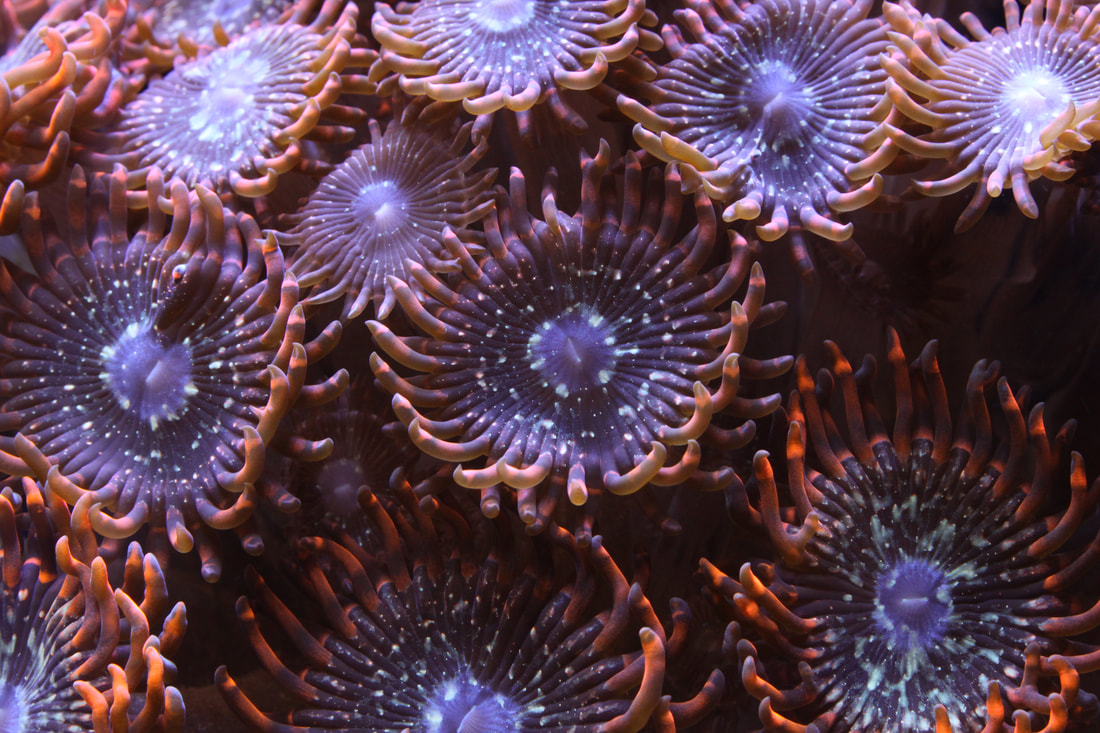
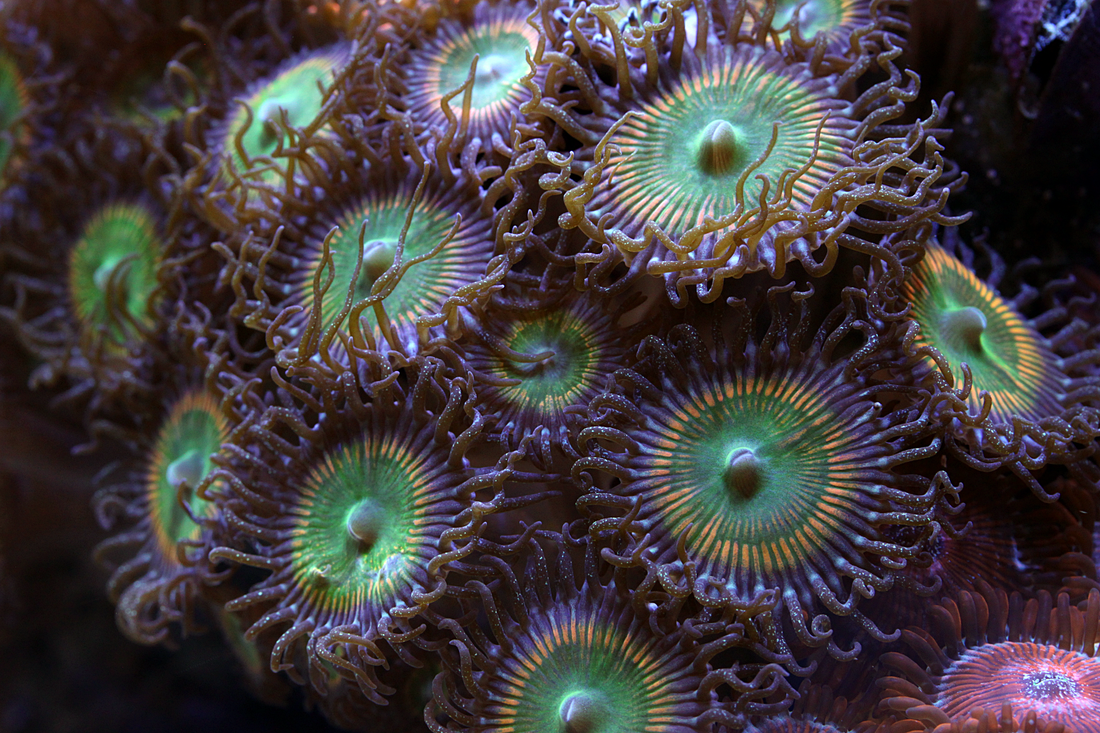
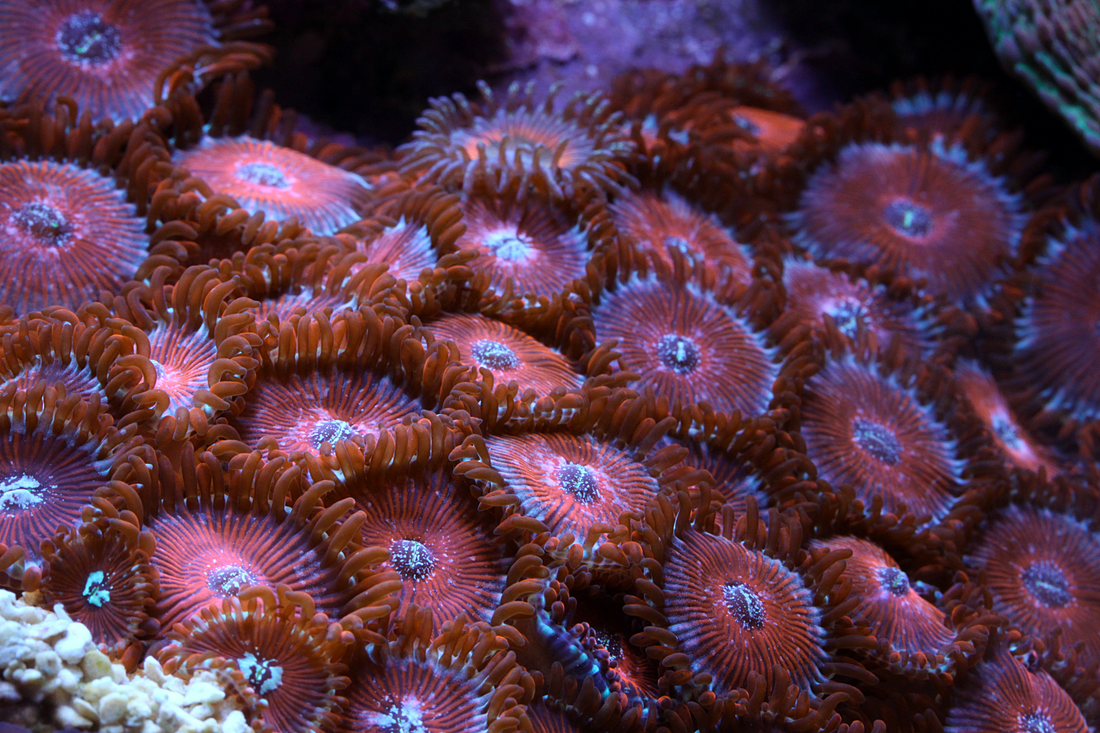
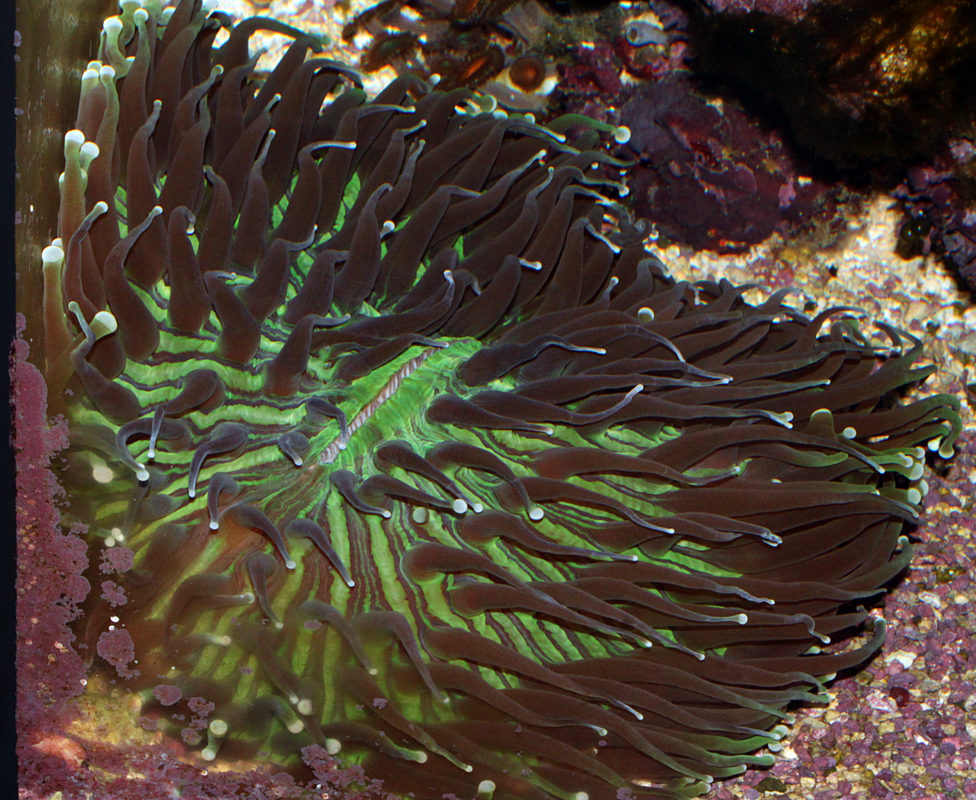
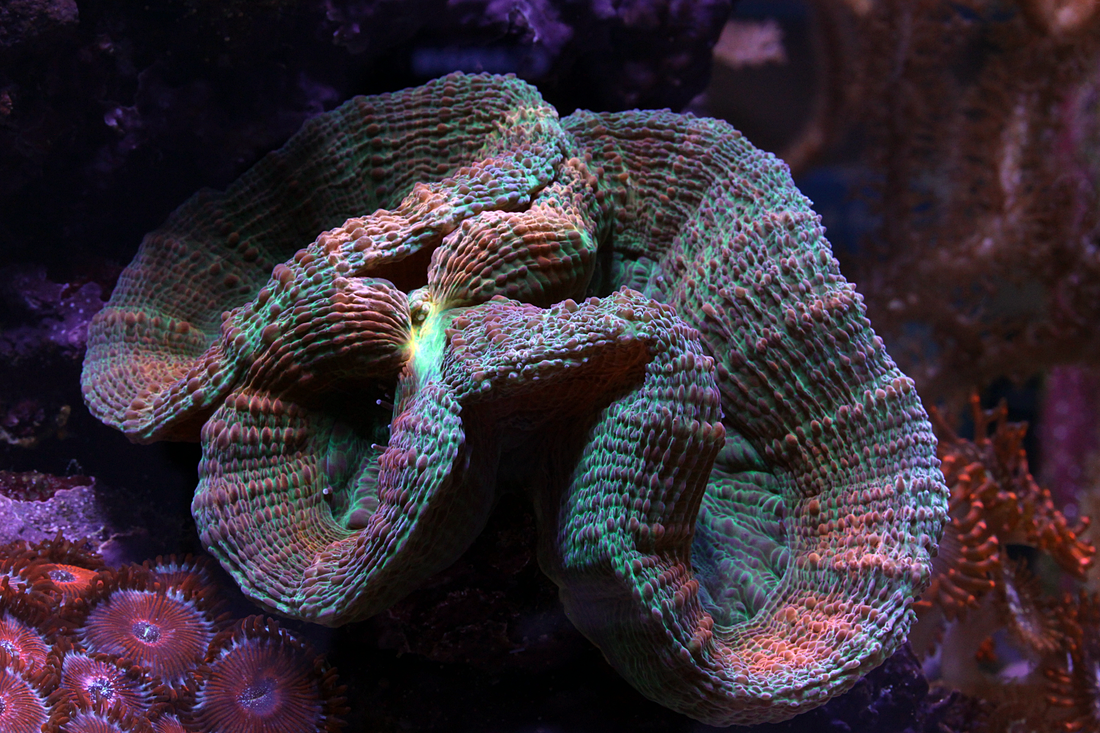
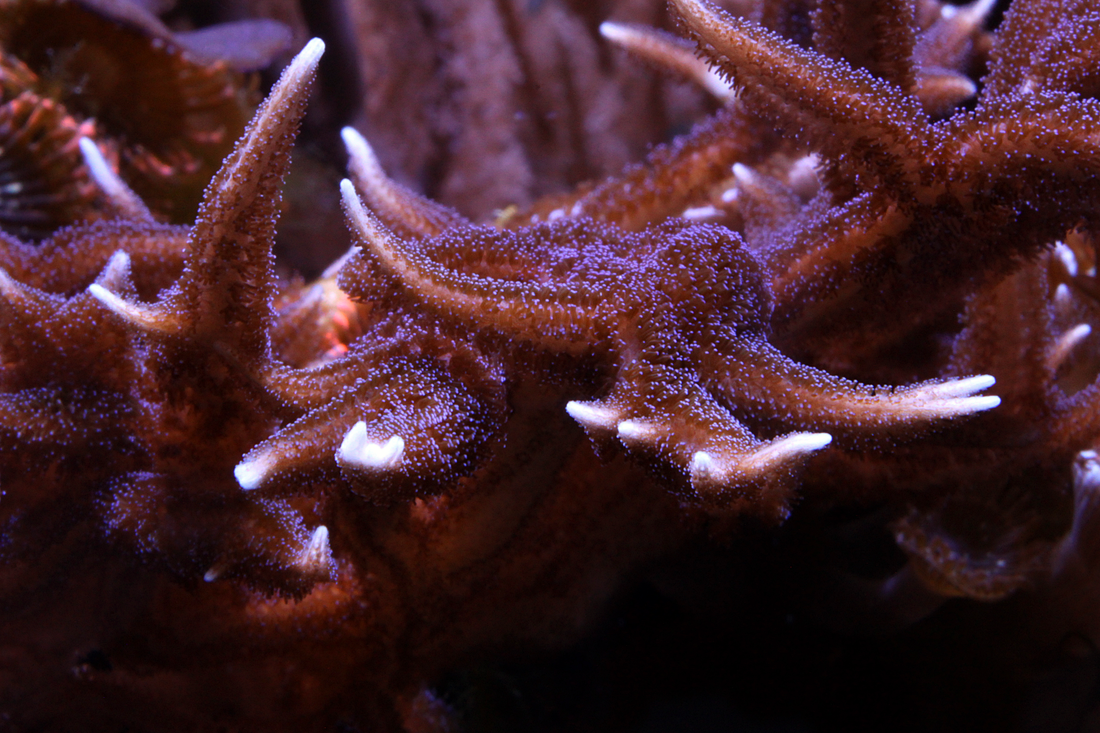
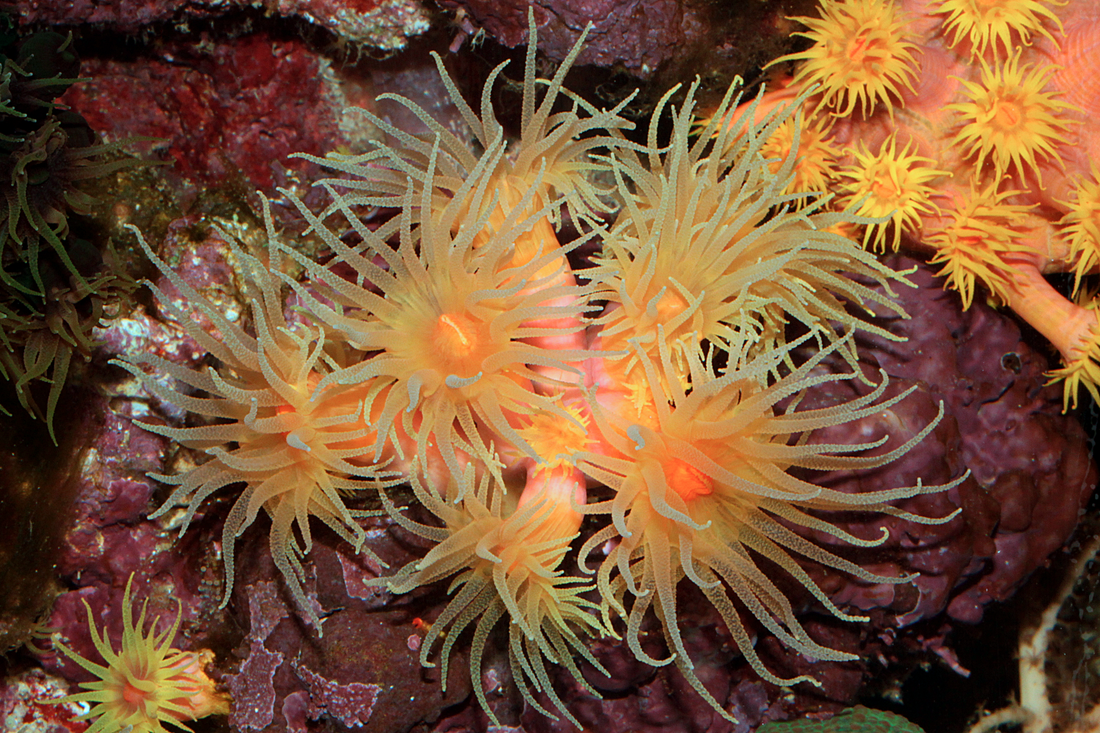
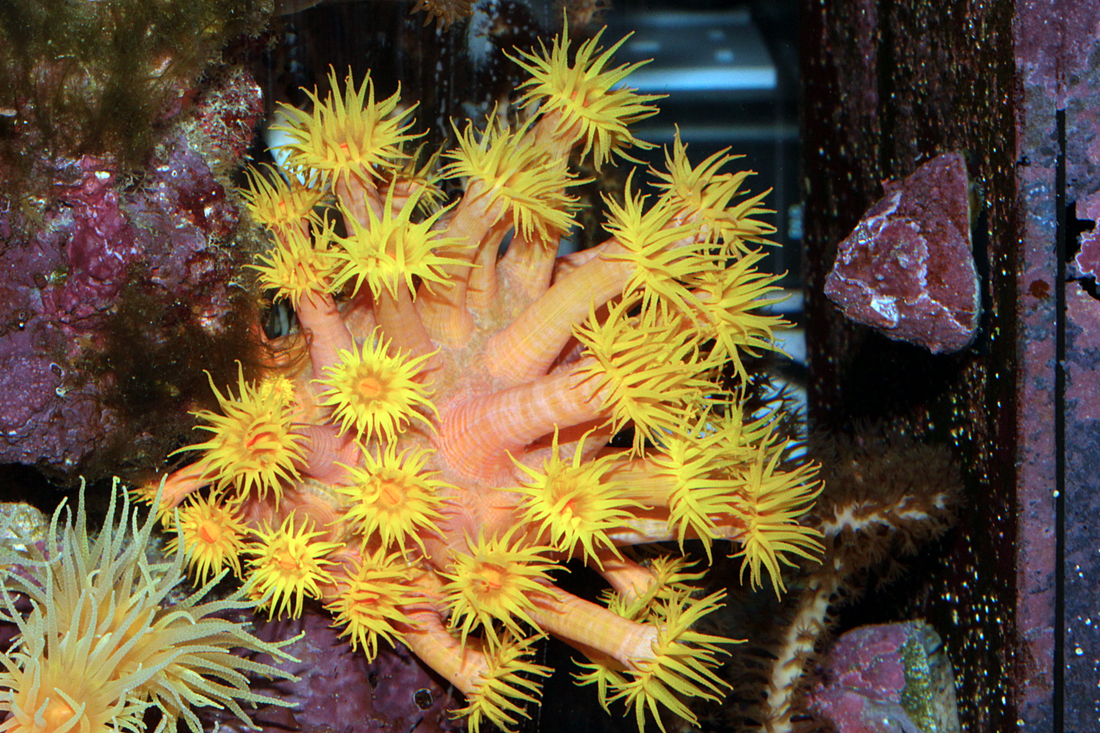
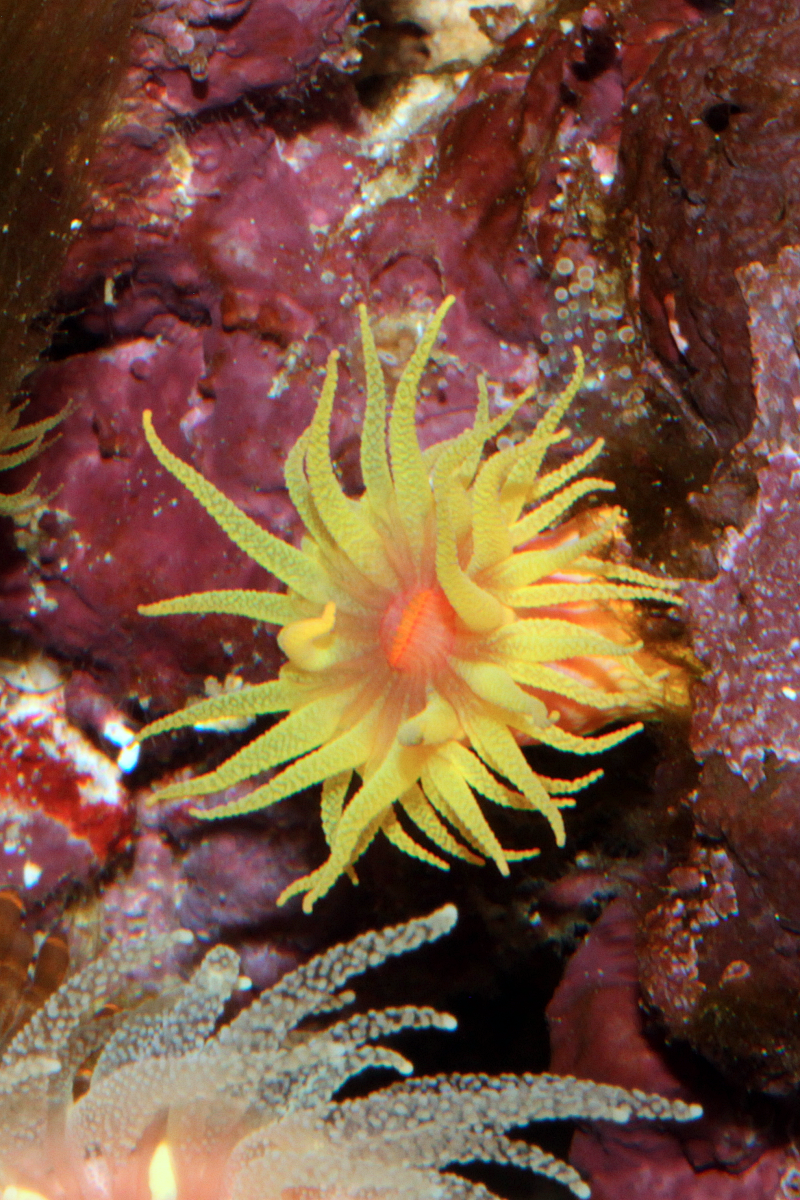
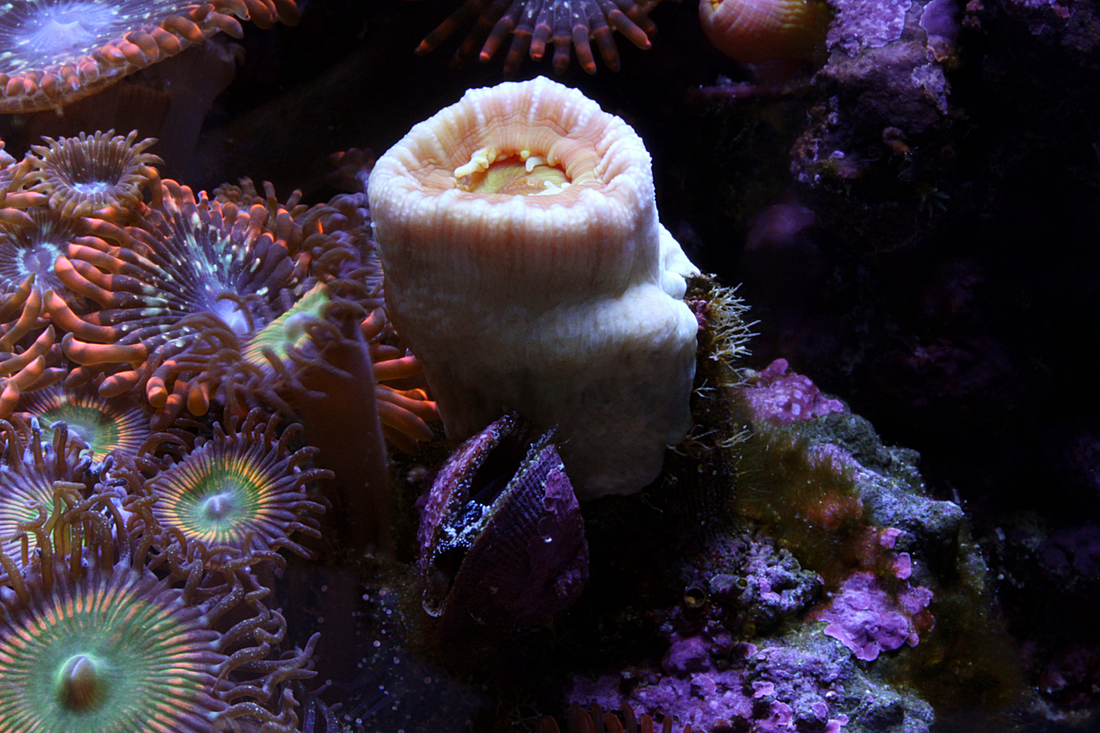
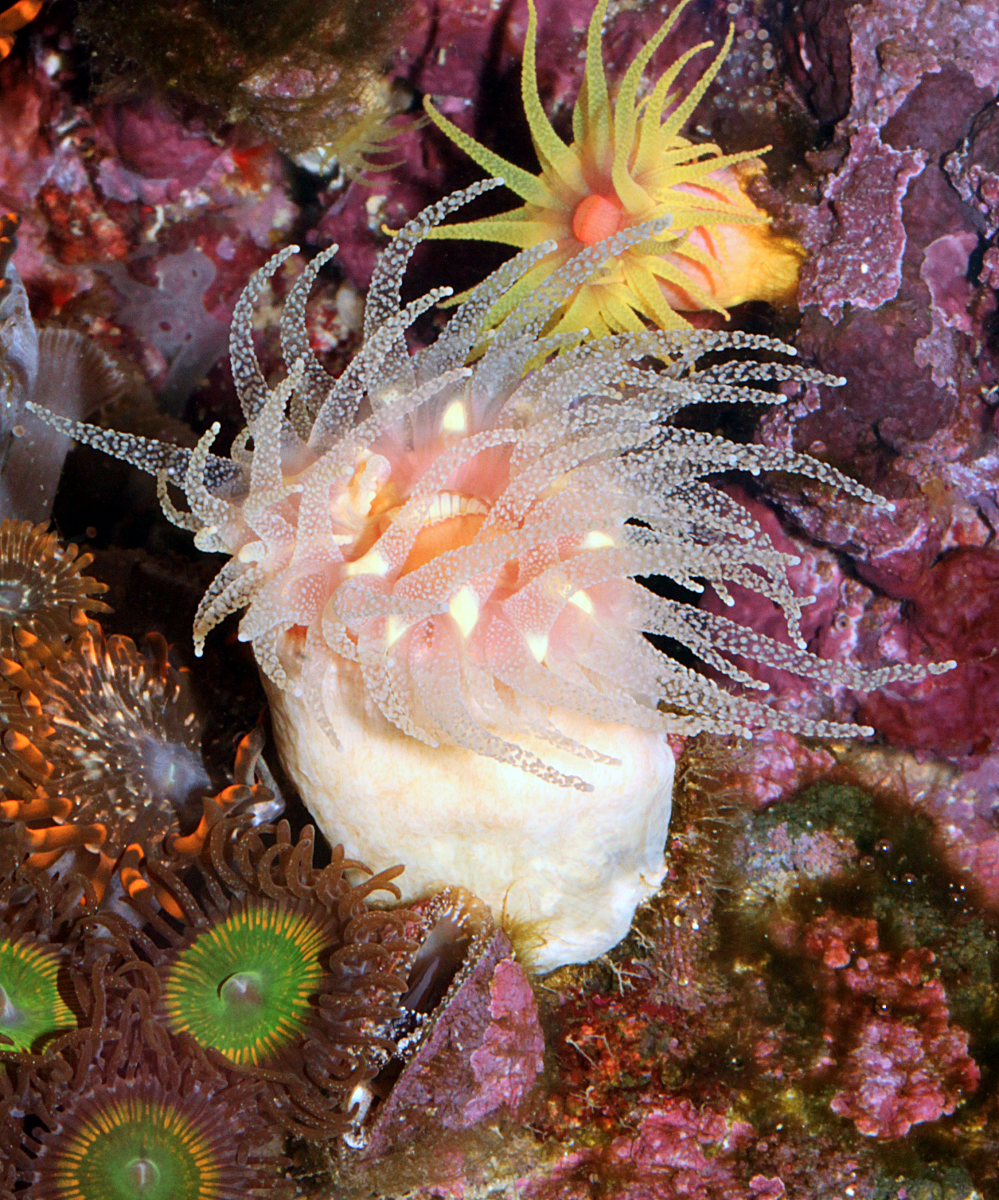
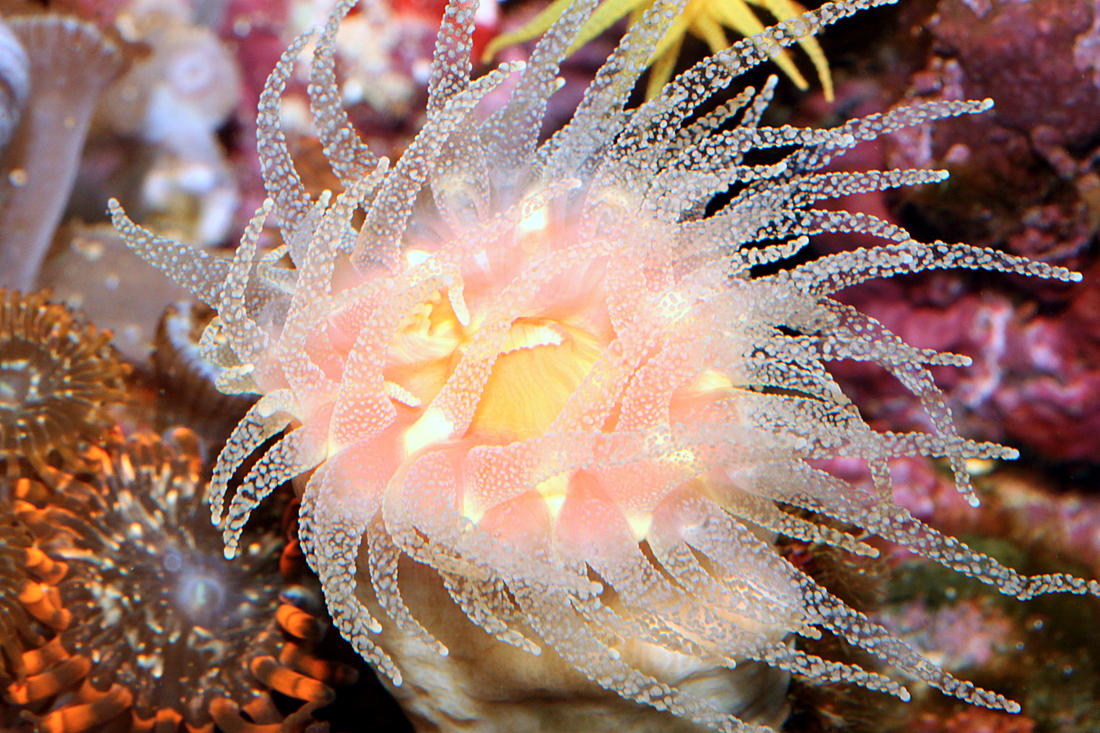
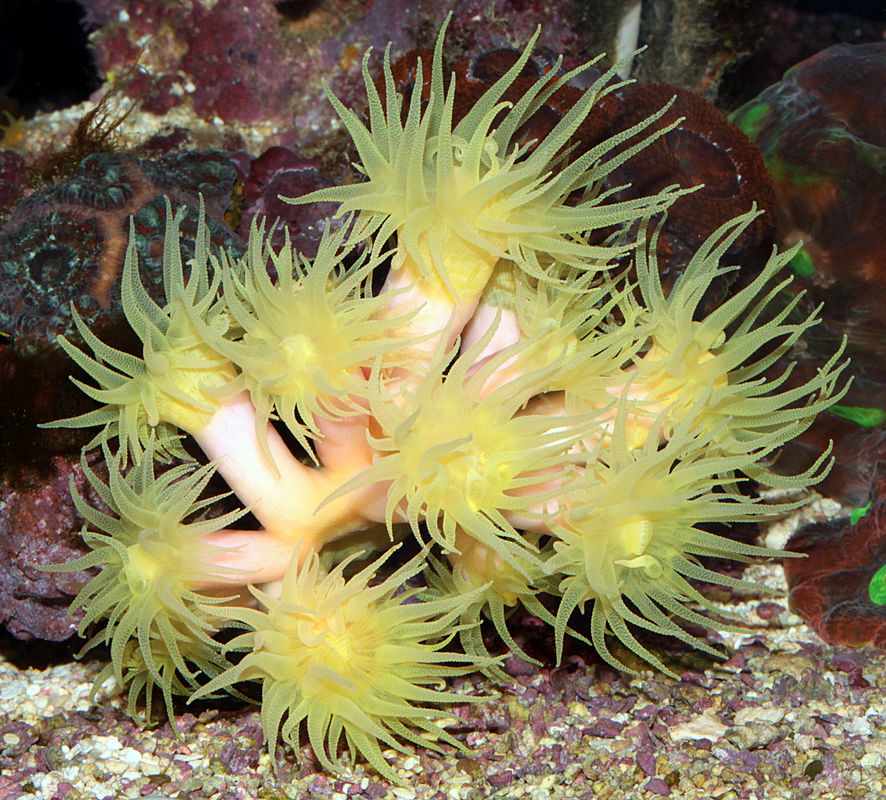
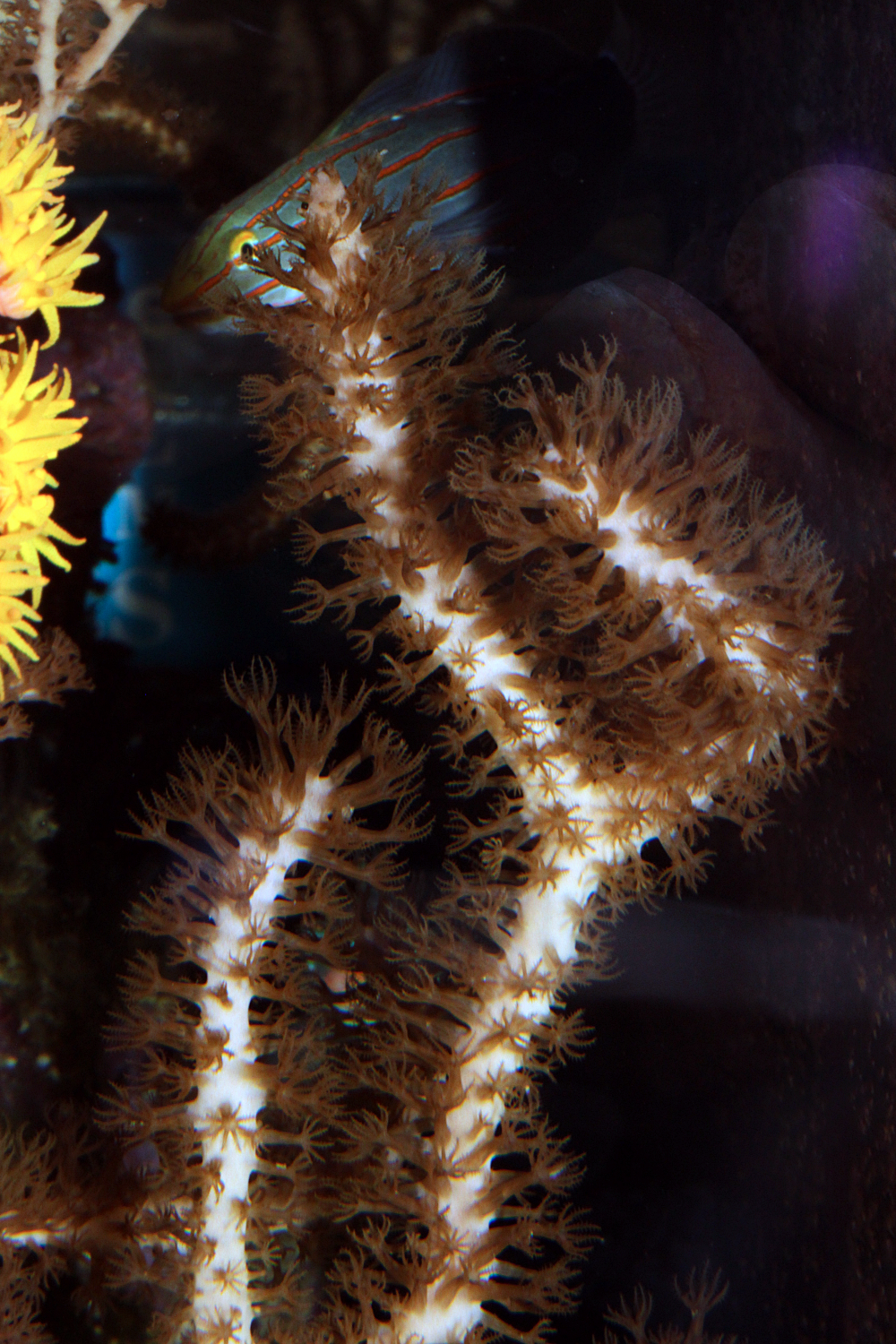
 RSS Feed
RSS Feed
